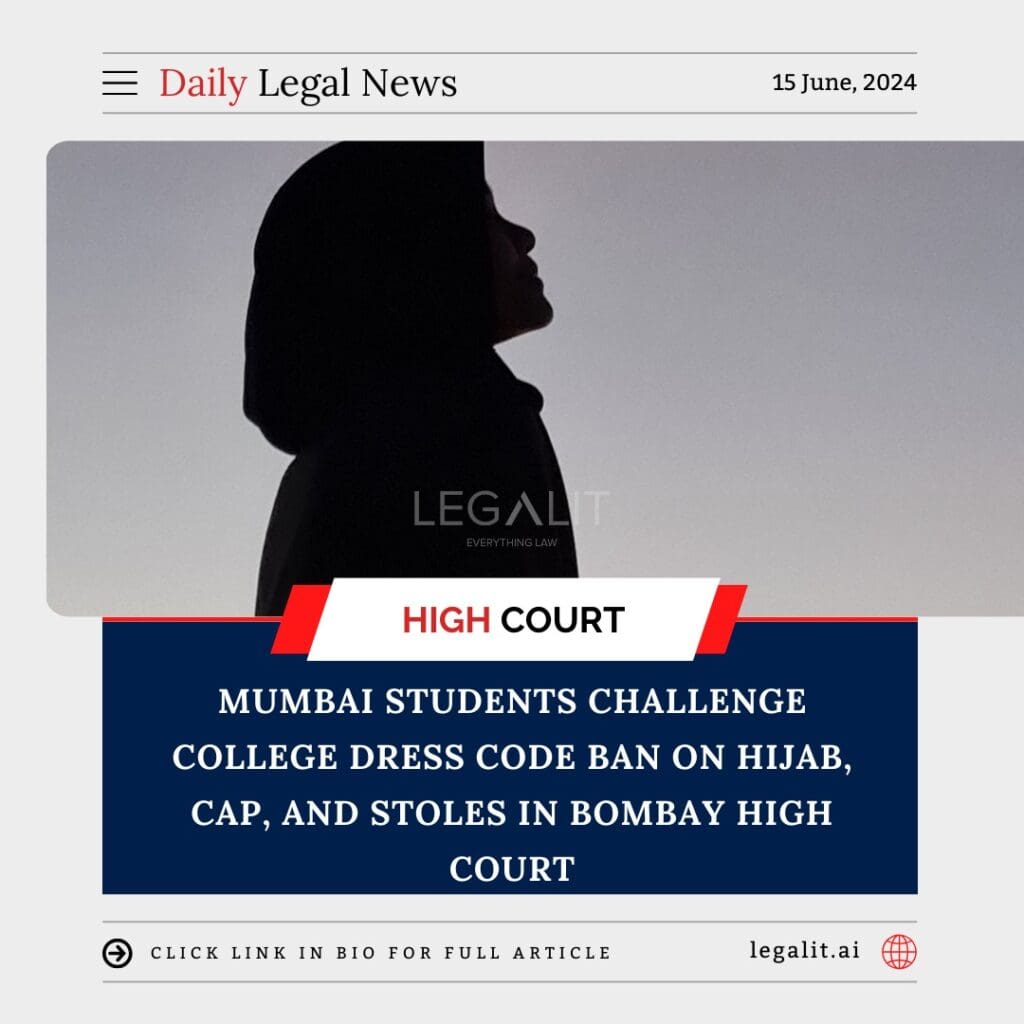
In a significant legal move, a group of students from Mumbai has filed a petition in the Bombay High Court challenging a recent college dress code that prohibits the wearing of hijabs, caps, stoles, and other religious attire. This case underscores the ongoing tension between educational institutions’ dress codes and individuals’ rights to religious expression.
Background of the Case
The controversy began when Acharya Marathe College in Chembur introduced a new dress code that bans not only revealing clothing but also religious attire such as hijabs, niqabs, and burqas. The college administration enforced this dress code starting from the new academic year in June, prompting a wave of objections from students.
Key Points of the Petition
- Violation of Constitutional Rights:
- The students argue that the dress code infringes on their fundamental rights guaranteed under Articles 21 and 25 of the Indian Constitution, which protect personal liberty and the freedom to practice and propagate religion.
- The petition emphasizes that wearing the hijab is an essential practice of their faith and that the college’s directive constitutes an undue restriction on their religious freedoms.
- Impact on Education:
- The students claim that the enforcement of the dress code has caused significant distress and disruption to their education. Several students have reportedly been barred from attending classes or submitting assignments because of their attire.
- The petitioners argue that the dress code disproportionately affects Muslim female students, forcing them to choose between their religious beliefs and their education.
- Administrative Responses:
- Despite repeated requests and protests, the college administration has refused to reconsider the dress code. The students have also approached national and state human rights commissions, seeking intervention in the matter.
- The administration justifies the dress code as a measure to maintain uniformity and discipline within the college. They argue that allowing religious attire could lead to divisions and disruptions.
Legal Precedents and Implications
This case follows a series of similar legal battles across India, most notably in Karnataka, where a high court upheld the state’s ban on hijabs in educational institutions. The Supreme Court of India has also been involved in deliberating the balance between uniformity in educational settings and religious freedoms.
The outcome of the Bombay High Court case could set a significant precedent for how educational institutions across India handle issues of religious attire and personal expression. It will be closely watched by legal experts, educational administrators, and religious communities.